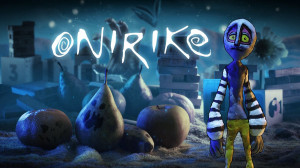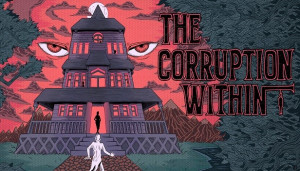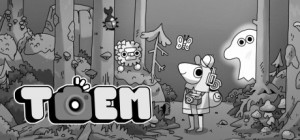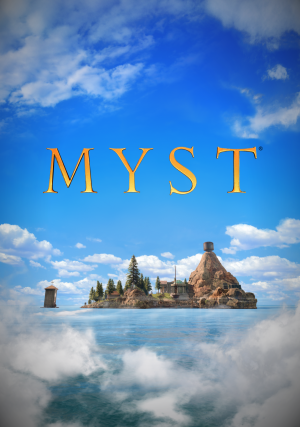Review for Krulk
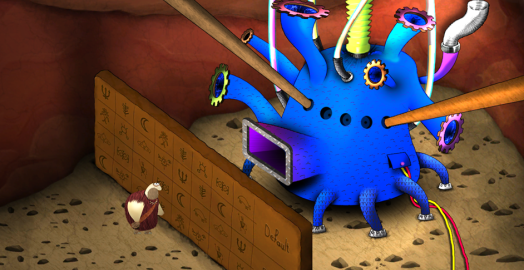
Humanity’s evolution from primates to Homo sapiens is an era steeped in mystery. Those dark times before we rose to the top of the food chain left us at the mercy of both the elements and other predators. What spurred our growth as a species? Was it supernatural intervention? Extraterrestrial? Random genetic mutation? Or just slow and steady ingenuity? These are the age-old questions explored in Black Mole Studio’s Android-exclusive Krulk.
Well, kind of.
Don’t expect any scientific answers to the anthropological questions posed above. Instead, the ways in which Krulk puts you in the shoes (or rather, bare feet) of a caveman is as humorous as it is thought-provoking. It’s a charming point-and-click mobile adventure with clever puzzles and goofy visuals, though be forewarned that technical issues may threaten to ruin your trip back in time.
The game opens with a cinematic set just beyond Earth’s atmosphere. A collection of meteorites begin their fiery decent before the scene changes to a lone caveman resting in a snow-covered nighttime landscape. Just as he’s about to take a bite of his fire-roasted meal, an arrow skewers the morsel. A spear follows thereafter, with the caveman dodging it by mere inches. A chase ensues, with our hapless hero barely able to outpace his pursuers. Just when it seems like he might not outrun them, the sky is illuminated with a warm orange glow. A meteorite lands, sending the protagonist plummeting down a massive crater. Here he finds himself safe but lost, with nowhere to go but deeper into the nearby cave system.
Taking control of the titular character, your refuge turns out to be no ordinary primeval cave. The side-scrolling action has a flat 2D appearance with an eclectic blend of hand-drawn environments and rendered elements. You’ll encounter pasted images of real-world statues from antiquity in one room, and then what looks like an office board room the next. Symbols and sculptures sprinkled throughout the cavern range between representations of alien beings, primitive rock art, and even modern technology like a clunky satellite control panel. Electrical wiring and plumbing equipment run throughout, furthering the mystery and spurring questions as to what’s happened here, and how a bulbous, cartoony little dude with a fur outfit fits into it all.
The graphics are quite high-resolution, lending the game a surreal aura with its mix of art styles. The way in which all the items are assembled together in the cave looks almost dreamlike at times, like the hi-tech mess of a computer system bathed in neon light connecting to a simple rope and pulley system holding up an ancient dragon relief carving – and all this in supposedly prehistoric times. At first I thought it made the game look cheap, but the visual and chronological mishmash actually ended up heightening my immersion. With no idea what anything might do, I found the strange mix of ancient, modern and even alien technology seemingly unpacked and dumped into the cave did a great job of making me feel like, well, a caveman, exploring to see what I might find next, and pushing buttons just to see what would happen.
Krulk is by no means a linear journey forward, so you will find yourself crisscrossing the cave quite a bit. That said, the whole cavern isn’t overly big and it takes only a couple of minutes to travel to the other side. Movements are slow and uniform, akin to Flash-era animation, with objects (like the caveman’s arms) working on hinges, animating like a pop-up book. Most of the environments have subtle ambient motion such as a shimmering pool of water or a swinging chain, and the backgrounds are further enhanced by atmospheric effects like light beams and particles. Even Krulk’s eyes dart about (and glow in the dark), keeping things lively even when standing still, mulling over a puzzle. Otherwise the cave system feels cold, empty, and abandoned, despite all the bizarre artifacts and machinery you encounter, with little sign of life aside from the occasional critter like a crocodile.
While hardly era-appropriate, the gentle mix of electronic, piano, rock, and flute arrangements do heighten the aura of wonder and mystery, and further the feeling of solitude. There is no voice acting, aside from the occasional scream from Krulk, aptly making the entire experience a humorous pantomime. Sound effects like the loosening of valves or the grinding of stone are all well-implemented, offering suitable feedback to indicate that you’ve made a change in the environment.
The game utilizes an inventory system, though it doesn’t come into play very much. If an item is required to solve a puzzle, a thought bubble will spawn above Krulk’s head as you approach the corresponding object, letting you know what you need to find in order to proceed. Most obstacles, however, involve direct environmental interaction such as throwing switches or adjusting dials in order to open doors or reveal further clues.
Krulk also obtains several permanent items, or powers, on his journey, also accessed from the inventory screen. These include a torch used to light dark areas, and a watch used to change the seasons outside, giving you access to various constellations through a telescope and producing items in the environment. Instances requiring these powers do not spawn a thought bubble, meaning you’ll have to figure out their use on your own, though this isn’t overly hard as the game won’t let you use these abilities anywhere they aren’t required (trying to equip the torch in a well-lit area, for example).
Puzzle design and variety are two of Krulk’s strong points. The setups are often mysterious, meaning there is no real clue as to what needs to be done until you play around a little bit. Experimenting is encouraged, so you won’t find yourself accidently turning a set of gears into an immovable mess. You’ll find yourself scanning a room for hidden clues by turning on a black light filter, plotting coordinates on a world map in order to ascertain latitude and longitude numbers, and opening and closing valves to get water running, among numerous other tasks. Many come down to pattern recognition, colour coordination, or just understanding cause and effect, like the aforementioned satellite control panel being used to operate a series of vacuum tubes.
There are a handful of memory puzzles as well, with one being a relatively literal translation of the card game Concentration. Another involves guiding a tiny mole through a set of holes set atop a kind of gameboard playing area. Charting what hole leads to another is straightforward enough but incredibly tedious, and it killed my interest (and immersion) in the game while it lasted. There are a few ways to die in Krulk as well, though these are all within the context of solving puzzles, and death only results in having to start back at the current room’s entrance.
Celestial imagery like stars, extraterrestrials, and spacecraft are often associated with puzzles, though by no means are the challenges exclusively based on alien technology or symbolism. The puzzle in the board room, for instance, has you rearranging chairs in accordance with maps of the constellations displayed via a projector screen. Why? Well, because it’s there, and solving it gets you a set of numbers used for… something else.
It sounds convoluted, and it is at times, but Krulk never overburdens you with details or locations, so taking note of the information you’ve obtained is usually enough to put you on track towards another puzzle solution, even if that means sitting down and fiddling with mechanisms for a little while until the connection becomes apparent. A nine-panel slider puzzle, for example, had me running my hands through my hair for more than an hour, but when I finally realized the solution, it was a feeling of accomplishment more than frustration, as the clues leading to the correct alignment had been adequately communicated; I just hadn’t found them at first.
Unfortunately, the game doesn’t always play fairly. Though I’d hardly consider myself a savant when it comes to such games, I can usually find my way through them without too much issue. Krulk stumped me a few times, to the point where I had to reach out for help in getting past several puzzles. It’s for this reason that I can comfortably say it’s a puzzle game for those more looking for genuine brainteasers than a straightforward narrative adventure. Minor spoiler alert One notable example involved directing the caveman to leap off of a cliff, despite the game warning me not to. After being stuck for some time, I finally ended up continuing to nudge the caveman to the edge of the cliff, and after three warnings he jumped, opening up a new area. End spoiler
The biggest problems I encountered, unfortunately, were technical. I played Krulk on both my phone and tablet, and the opening cinematic was missing in the phone version. The extra play area on the tablet is nice, but the gameplay doesn’t really involve any pixel hunting, so the smaller screen isn’t overly detrimental. I did find it harder to engage with certain points of interaction on the phone due to my finger accidently tapping too much of the explorable area around them, however.
The game is controlled entirely with the touch screen. You tap either side of the screen (or a hotspot like a panel, door, or object on the ground) to make the caveman move. There is no portrait mode, meaning you’ll have to hold your device horizontally, but as a side-scroller that only makes sense. On the very first screen I came to a hiccup where the caveman would stop at a set of pipes while the image of an item needed to progress spawned overtop his head. I initially thought I was stuck in this small area, unable to continue, before finally realizing I could tap again further right to continue. In this case my phone screen provided a wider shot of the room, alerting me to the fact that there was additional area to click beyond the pipes. The camera usually pans far enough to give an adequate view of what’s ahead in each room, but this first hallway proved troublesome on my tablet.
Accessing the small scrap of parchment permanently in the inventory brings up the Google keyboard to write notes, which comes in handy on occasion (the game even prompts you to “memorize” a password at one point). Curiously, tapping outside the keyboard closes the notepad and saves, but hitting the close arrow button at the bottom of the screen closes it without saving. You’ll probably need good old-fashioned pen and paper to sketch out patterns anyway, as the parchment does not allow for drawing, making its inclusion less helpful.
Unfortunately, the glitches evident on my tablet became so pronounced that I was eventually forced to abandon it entirely. One serious bug caused me to become stuck partway down an elevator ride and unable to get out. As Krulk records your progress automatically and only uses one save slot, this meant I had to start the game all over again. Even more serious were the times when the touch input would not respond, stalling my progress. In particular, the mole puzzle failed to operate correctly, as the mole would simply not move when tapped, leading me to believe that the board was not interactive. It was only after I started playing the game on my phone and reached this same point that the creature moved (most of the time), allowing me to continue. Even after changing to my phone, however, I ran into several other instances where the touch input would not respond properly, like when a machine produced a key I needed, spitting it onto the ground in front of Krulk. Despite the fact that it was in plain sight, with no obstacles blocking it, getting him to actually pick the key up took the better part of five minutes, leaving and reentering the screen several times until it finally worked.
I also encountered one instance where I could make an object clone itself, allowing me to pick up multiple copies. Only one would ever show in my inventory, so I wouldn’t call this game-breaking, but it did throw me off my thought pattern, wondering whether I in fact needed multiple versions of the item or not.
It’s hard to estimate game time given the many starts, stops and lulls, sometimes due to its head-scratching gameplay but more often because of all these technical issues. And yet, I kept coming back for more because I was having fun in between the frustrations. For the most part the puzzles are varied, cleverly designed, and provide a steep challenge without becoming overwhelming. The way the seemingly mismatched pieces of this bizarre world fit together seems odd at first but becomes something special, and despite the caveman’s relative silence throughout, I grew quite attached to the stocky little guy and was eager to uncover exactly what kind of place he had stumbled into. It’s very apparent that a lot of effort went into creating this game, and the end result is a surprisingly immersive and satisfying adventure – when it works as it should. Here’s hoping that the bugs, ranging from minor irritations to game-killing deal-breakers, will be resolved so more players can enjoy it.



_capsule_fog__medium.png)
__large.png)
__large.png)
__large.png)
__large.png)



